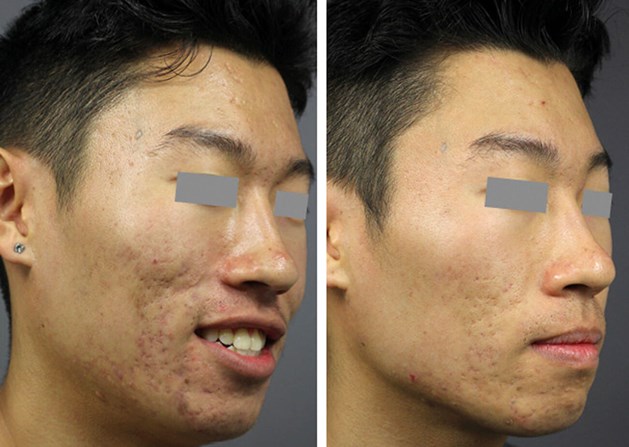Acne and Acne Scars Treatment: Professional Solutions for Lasting Results
Acne and Acne Scars Treatment: Professional Solutions for Lasting Results
Blog Article
Discovering Skin Problem: Recognizing and Treating Acne Scars for Healthier Skin
Acne marks represent a substantial issue for people seeking to keep healthy skin, as they can influence both look and self-confidence. Understanding the different sorts of marks, from atrophic to hypertrophic, is crucial for establishing appropriate therapy alternatives. While specialist treatments like chemical peels and microneedling can be reliable, the significance of personalized treatment strategies can not be overemphasized. Preventative procedures play a vital duty in reducing future scarring. As we explore these aspects, one should think about exactly how the appropriate method can lead to transformative results.
Recognizing Acne Marks

The body's natural recovery process can lead to either atrophic marks, which look like anxieties in the skin, or hypertrophic marks, which are elevated and result from overproduction of collagen. Furthermore, the emotional toll of acne marks should not be ignored; lots of individuals report feelings of humiliation, anxiousness, and decreased self-esteem. This emotional concern can impact social communications and total quality of life.
Attending to acne marks calls for a thorough understanding of their development and influence. Recognition of the potential for long-term repercussions related to neglected scars can motivate individuals to seek appropriate treatments. Early intervention and effective monitoring approaches can considerably improve skin appearance and enhance emotional strength, stressing the relevance of recognizing the intricacies bordering acne marks.
Types of Acne Scars
Acne marks can be classified right into unique types, each exhibiting distinct qualities and requiring specific therapy strategies. acne scars treatment. The main types of acne scars include atrophic, hypertrophic, and keloid marks

Hypertrophic scars, on the other hand, are elevated above the skin degree and are the outcome of excessive collagen manufacturing during the recovery process. They usually continue to be within the borders of the initial acne sore. Keloid marks are similar yet extend past the initial injury website, developing larger, raised locations that can be scratchy or excruciating.
Recognizing these sorts of scars is vital for choosing ideal treatment options. Different scars might react far better to specific therapies, such as laser treatments, fillers, or surgical interventions, highlighting the relevance of a customized strategy to acne mark monitoring.
Determining Your Marks
Acne marks typically drop right into two classifications: hypertrophic and atrophic marks. These can further be categorized right into ice-pick marks, boxcar marks, and rolling scars, each displaying unique attributes and requiring various approaches for evaluation.
Hypertrophic scars, on the other hand, are elevated and occur because of extreme collagen production during the healing procedure. Identifying the details attributes of your marks-- such as structure, width, and depth-- is necessary for appropriate identification (acne treatment for sensitive skin). Furthermore, think about the distribution of scars across your skin, as this can indicate the intensity and period of the acne problem
Involving with a skin doctor can give beneficial understandings into the nature of your scars, assisting in the differentiation between numerous types. A complete understanding of your marks will eventually lead to a more customized and efficient therapy strategy, making certain a clearer and healthier skin.
Treatment Options Available
Recognizing the certain kind of acne scars existing on your skin prepares for exploring reliable treatment alternatives. Usual types of acne marks include atrophic (depressed), hypertrophic (elevated), and post-inflammatory erythema.
For atrophic scars, options such as chemical peels, microneedling, and laser resurfacing are commonly made use of. Chemical peels off make use of acids to remove the outer layer of skin, promoting brand-new cell development.
Hypertrophic marks can be treated with corticosteroid shots to flatten the scar or laser treatment to lower redness and improve look. Silicone gel sheets i was reading this and pressure dressings might also help in managing increased marks.
Additionally, facial fillers can momentarily fill out clinical depressions from atrophic scars, while medical excision may be proper for extreme cases. Each treatment alternative has its site link factors to consider and advantages, making it vital to seek advice from a dermatologist. They can offer tailored recommendations based on the type and intensity of your marks, as well as your skin type and general wellness.
Tips for Prevention
Reliable avoidance methods can dramatically lower the chance of establishing acne marks. Making use of non-comedogenic products helps prevent clogged pores, which can exacerbate acne.
Staying clear of need to pop or select acne sores is critical, as this can bring about much deeper skin damage and increase the threat of scarring. Instead, consider making use of a cool compress or over the counter treatments to reduce swelling and soreness.
Sun protection is an additional crucial aspect of avoidance; ultraviolet (UV) rays can darken marks and impede the healing process. Using a broad-spectrum sunscreen with at least SPF 30 daily can shield the skin and promote also recovery.
Lastly, keeping a balanced diet rich in minerals, vitamins, and antioxidants sustains skin health and recovery. Staying moisturized and managing stress and anxiety degrees can additionally play a considerable role in minimizing acne flare-ups. By executing these approaches, individuals can dramatically reduce their opportunities of developing acne scars.
Conclusion
Finally, understanding and recognizing acne scars is necessary for effective therapy and attaining much healthier skin. Different sorts of acne scars, including atrophic and hypertrophic scars, demand specific interventions tailored to specific demands. Treatment alternatives range from chemical peels and microneedling to corticosteroid injections, stressing the importance of getting in touch with a skin specialist. In addition, adopting a gentle skincare routine and shielding the skin from UV exposure can substantially add to the avoidance of important link further scarring and overall skin health and wellness.
The body's all-natural recovery procedure can result in either atrophic marks, which show up as anxieties in the skin, or hypertrophic marks, which are elevated and result from overflow of collagen. They are further separated right into 3 subtypes: ice pick marks, boxcar scars, and rolling scars. Acne scars typically fall into two classifications: atrophic and hypertrophic scars. These can even more be classified into ice-pick marks, boxcar marks, and rolling scars, each exhibiting distinctive characteristics and requiring various strategies for analysis.
Different types of acne scars, consisting of hypertrophic and atrophic scars, necessitate details treatments customized to private requirements.
Report this page